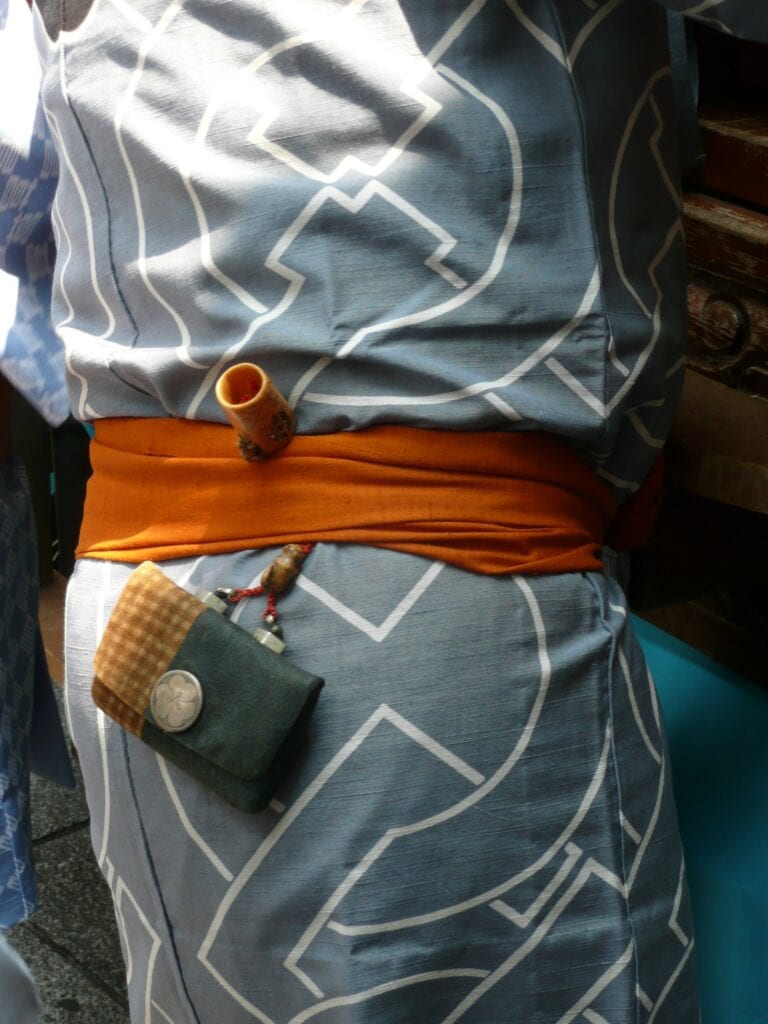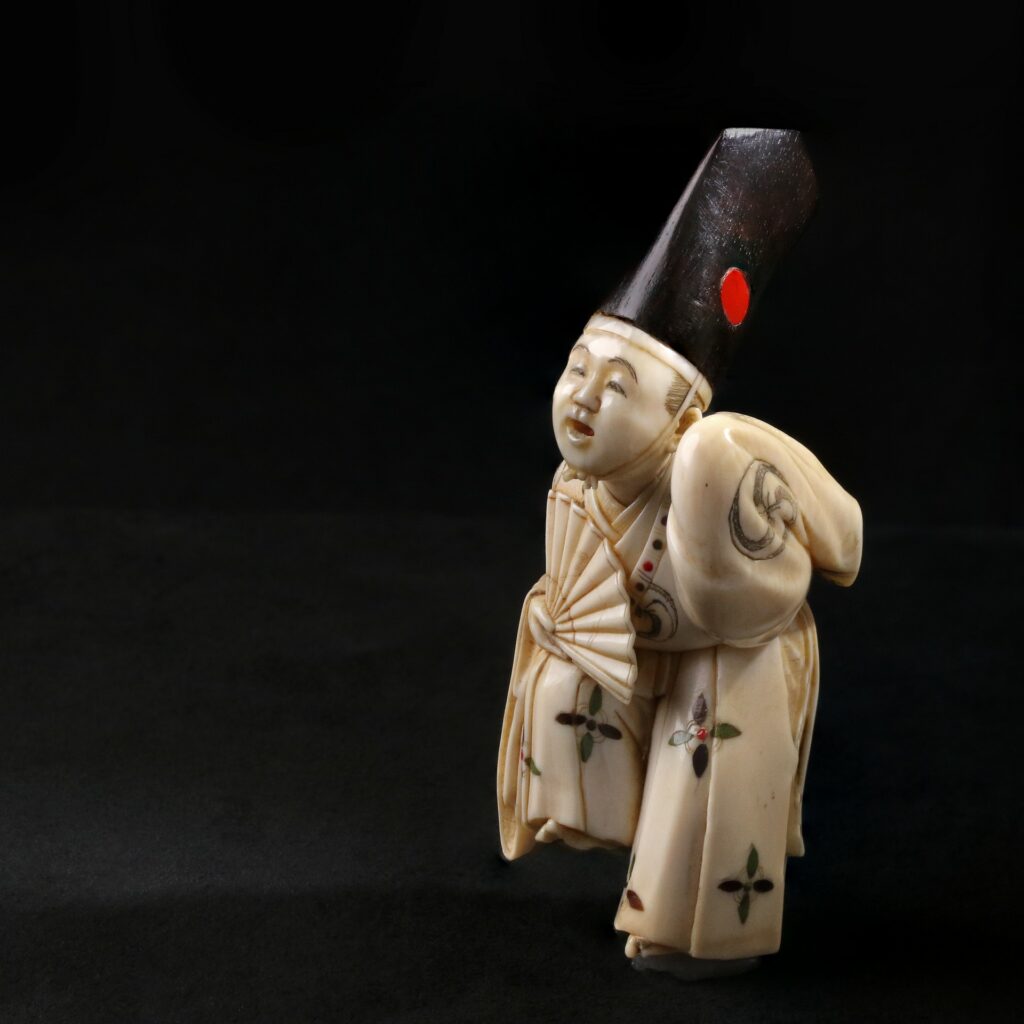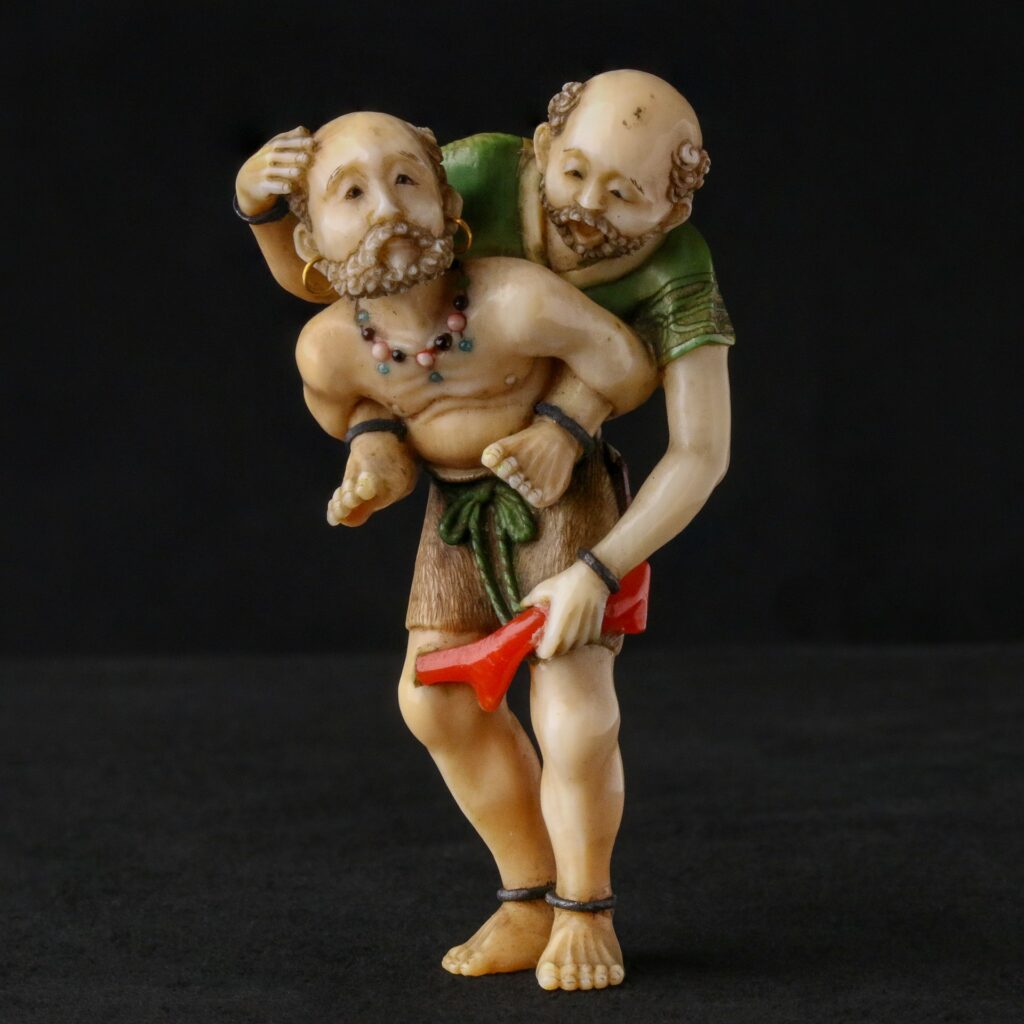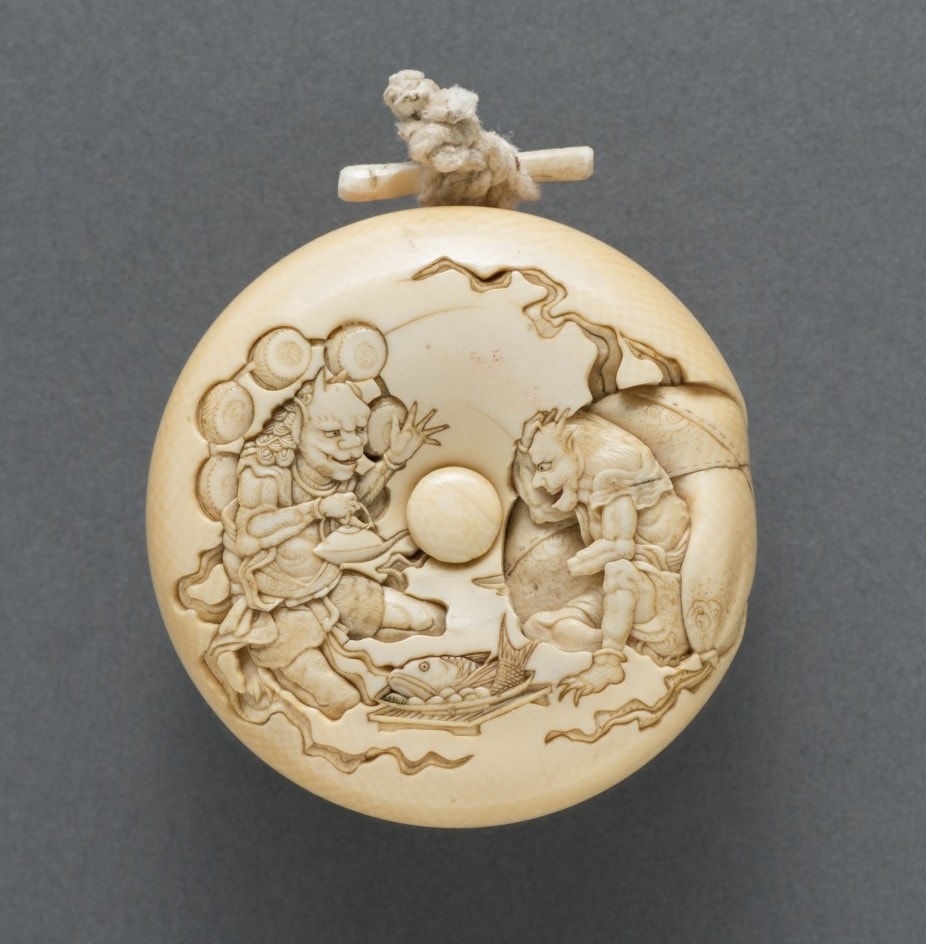Fashion accessories can be great fun, but what if you must hide them? This isn’t a rhetorical question. It was a fact of life in Edo Period Japan (1603-1868) for townspeople who wanted to show off their wealth and sophistication. The ruling samurai restricted how much luxury the lower classes could display, but clever artists and their patrons delighted in surreptitiously thumbing their noses at the rules. They created netsuke, tiny sculptures of precious materials that could be easily hidden when needed.
Netsuke and the Art of Little Wonders was a one-gallery exhibition at the Dayton Art Institute that featured a wide variety of beautiful, humorous and sometimes even scary netsuke. It closed February 19, 2023, but these charming Japanese miniature sculptures are just so fun that we’re sure our curious readers will enjoy learning about them.
What is a netsuke? It’s a small toggle of wood, bone, ivory, lacquer, or even ceramic, a fashion accessory for traditional Japanese clothing. Kimono don’t have pockets, so Edo people carried their stuff … tobacco, medicine, small coins …in a pouch suspended from a sash and anchored by a netsuke, as you see in this photo. That particular netsuke, part of the uniform of a participant in the Sanja Festival in Tokyo, appears to be fairly simple.


This photo of a netsuke from my collection, gives you a sense of the size and detail on many of these tiny creations. The old man is a hero in a Japanese folk tale. On the bottom you can see details of his straw-sandaled feet, the signature of the artist and the two holes for a cord to connect it to a pouch, all in a sculpture 1 ½ x 1 ¾ x 1 ½ inches, an amazing accomplishment. This netsuke could have held up a small purse, tobacco pouch, medicine or seal case, small lantern, or even a writing kit. Originally, architectural sculptors, Buddha image-makers, lacquerers, potters, metal-workers and mask and doll makers made netsuke on the side. As netsuke became more popular, highly trained artists specialized in creating the tiny fashion accessories. The themes and designs of the netsuke depended on the aesthetics and assets of the buyers.

The Dayton Art Institute exhibit grouped the netsuke by themes – mythical figures, folktales, masks and monkeys, fantastic creatures, nature, entertainers, materials and techniques and types. Netsuke began as simple pieces of wood but developed into exquisite figures carved in the round. There’s a gentle playfulness to many of the netsuke, as you can see here in this example of a man strumming a shamisen. Looking up confidently and smiling, musicians like these were commonly seen in theaters, tea houses and on street corners. He’s made of ivory with red inlays in his headband and coat. Hanging from the back of his sash he has his own tiny netsuke and inro or signature seal case.

Edo people were crazy about kabuki, Japanese dance-dramas. This netsuke is a Sambaso dancer who traditionally performed in kabuki theaters to open the new season of performances on November 1 each year. The short lively dances were designed to purify the performance area, a Shinto religious ritual. The dancer used a folding fan to emphasize his movements. A distinctive feature of his costume is the tall black hat with the red sun discs on each side. Details, such as the design on the dancer’s costume, are added to the ivory with black ink.

Japan has many mythical figures including some that teach a lesson. That’s the case with this netsuke of Ashinaga and Tenaga. Legends reported that supernatural people lived on an island in the Eastern Sea between China and Japan. The Ashinaga had long legs and short arms while the Tenaga had long arms and short legs. When they worked together, they could harvest fish and treasures from the sea, including this valuable red coral which was believed to protect against sickness. As you can see, some netsuke had bright areas of color, including the necklace on the Ashinaga. The pigments could be natural dyes or, by the late 19th century, imported chemical dyes from Europe.

Japanese folk tales are full of yokai, shape-shifting creatures big and small, that are still part of popular culture. One of the favorites is the tanuki (Japanese raccoon dogs) that possess special magical abilities and love to play tricks on humans. There are many stories of their mischief and trickery. The tanuki in this netsuke is patiently holding a saké bottle while two men seem to be negotiating something. What trick is the tanuki planning on the samurai on the right or the commoner on the left? Have fun imagining the ending to this story.
Would you like to see more netsuke? A selection of these miniature masterpieces is always on display at the Cincinnati Art Museum in Gallery 138. Below is a manju style netsuke currently on view that’s in the shape of a Japanese round rice cake.

By the Edo Period, some of the fierce gods of nature had become beings with human characteristics. On the left is Raijin, the god of thunder and lightning, with his taiko drums arrayed behind him. To the right is Fujin, the god of wind sitting in front of his bag of storms. Look closely and you’ll see Raijin holding a kettle of saké as the two gods prepare to feast on a dinner of fish. What good luck! They’re too busy drinking and eating to unleash a typhoon on Japan.
Have fun at CAM where you can see more netsuke up close and personal: animals of the zodiac, Noh Theater masks, comic actors and heroes from folk tales. Netsuke are treasures of imagination and creativity.